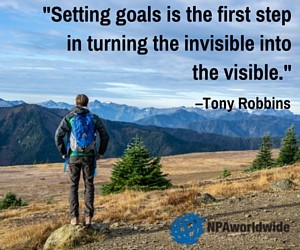 If you’re just branching out into international recruitment, you may have a lot of questions. One thing you may *not* have considered, though, is how negotiating styles can vary from country to country. You run the risk of killing a deal if you approach negotiations the same way you do it in your own country. Harvard Business Review published an excellent piece on this topic. It’s worth reading in its entirety, but here are some of the key points.
If you’re just branching out into international recruitment, you may have a lot of questions. One thing you may *not* have considered, though, is how negotiating styles can vary from country to country. You run the risk of killing a deal if you approach negotiations the same way you do it in your own country. Harvard Business Review published an excellent piece on this topic. It’s worth reading in its entirety, but here are some of the key points.
Be careful how you express disagreement. In certain cultures, it is very acceptable to say that you strongly disagree or even to tell the other party she is wrong. While it might be easy to interpret these types of statements to mean the negotiation is going poorly, it could actually mean the start of a lively and productive discussion.
Displaying emotion varies widely. There are many negotiating styles that include emotional displays from waving hands/arms, boisterous laughter, and raised voices. However, these traits can be viewed as unprofessional in other cultures. Where negotiating can get confusing and complicated is where these characteristics meet. For example, some cultures that are highly expressive emotionally, such as Brazil, also avoid direct confrontation. In other cultures, such as Germany or the Netherlands, open disagreement is viewed positively AS LONG AS that disagreement is expressed calmly and factually.
Trust is an important ingredient. And, different cultures build trust in different ways. In the US, for example, we build “cognitive” trust, which is “head-based”: we look for people who are reliable, know their stuff, and can demonstrate a high-quality product or service. The other type of trust, “affective” trust, comes from relationships: that is, feelings of friendship or emotional closeness. You may find that you need to spend considerable time upfront building an emotional connection before you can really start negotiating. This could include meals or social activities where business is not discussed at all.
Avoid yes-or-no questions. There are many cultures where it is simply not appropriate to give a yes or no answer. Asking questions which force this can create a situation where the other party feels obligated to answer yes due to long-held cultural norms, because it would be seen as highly disrespectful to say no. This can lead to all sorts of problems between parties.
Tread lightly with written contracts. Again from a US perspective, we are very accustomed to verbally coming to terms on an agreement and then following that discussion up with a 20-page written contract (which also may require negotiation). Once a contract is signed, we do not expect there to be any variation from the agreement. In some countries, the mere existence of a written contract is offensive and means the other party can’t be trusted. In other countries, a written contract is not actually legally binding and is a dynamic document, meaning that terms can continue to change even after signature.
There is a two-minute video in the post that helps illustrate some of these concepts, which I am sharing for you here:

 Today’s guest blogger is Liz Carey, network coordinator for NBN. NPAworldwide and NBN merged in September 2014, and our two networks are working toward a full integration effective January 1, 2016. We are happy to have Liz as a regular part of our blogging team.
Today’s guest blogger is Liz Carey, network coordinator for NBN. NPAworldwide and NBN merged in September 2014, and our two networks are working toward a full integration effective January 1, 2016. We are happy to have Liz as a regular part of our blogging team.









